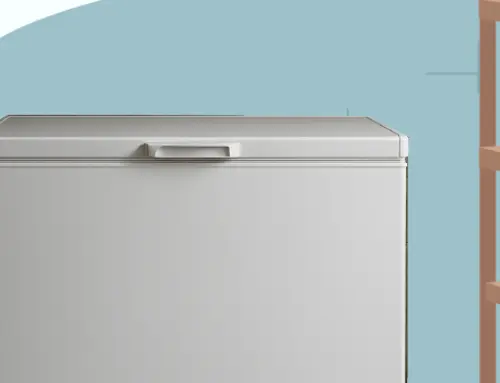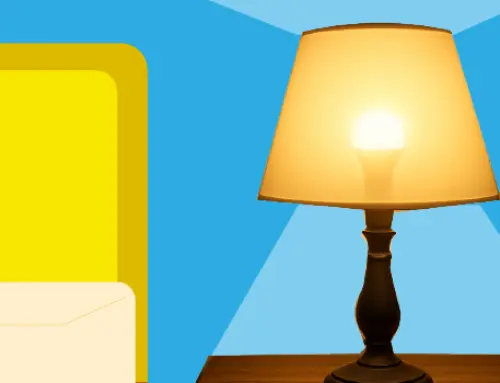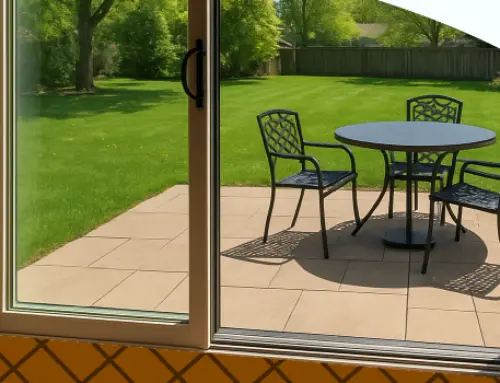Which Costs More? Turning Your AC On and Off vs. Leaving It On
by Tyler Castle
16.4 min read
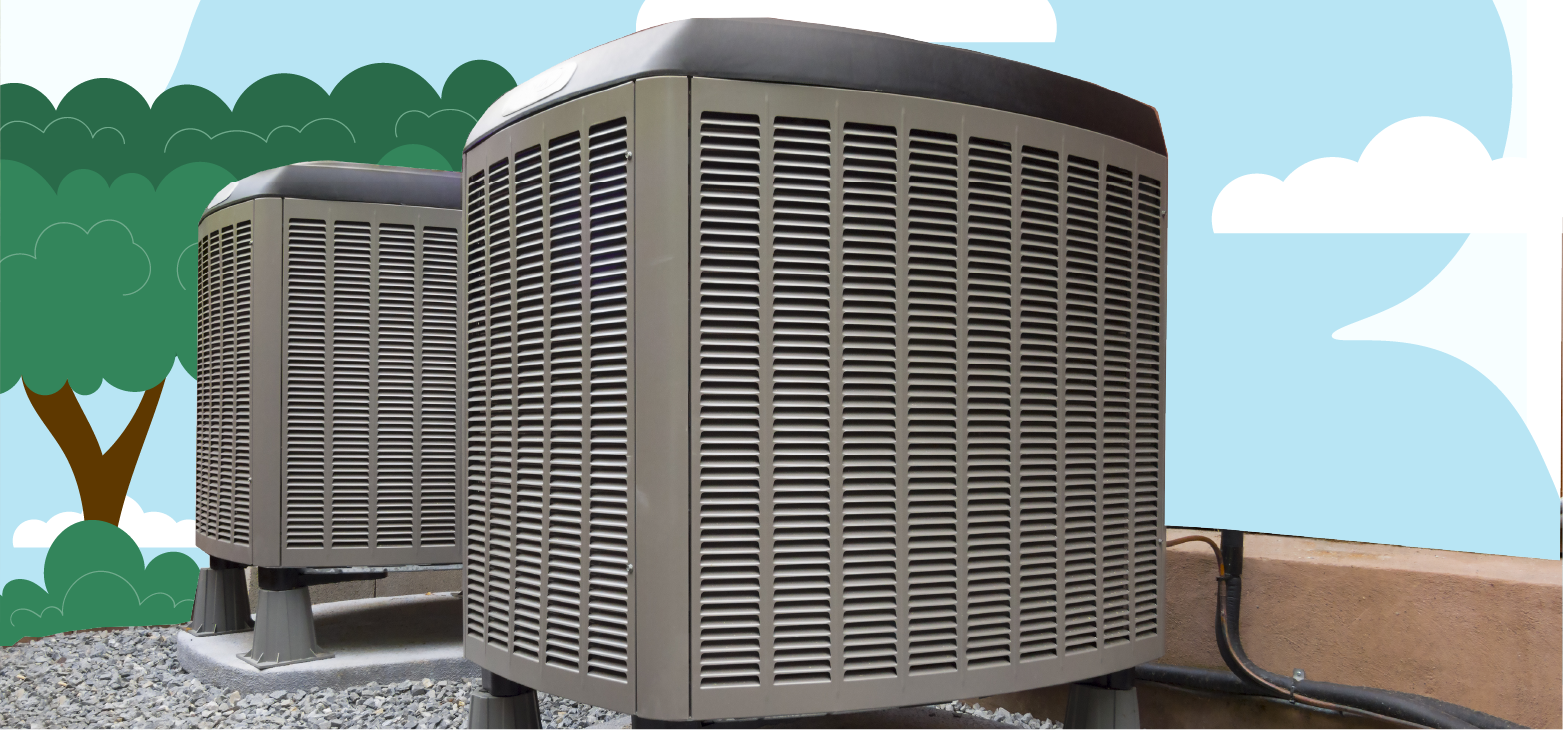
When summer temperatures rise, so do electricity bills—especially if your air conditioner is working overtime. One of the most common questions homeowners ask is: "Should I leave the AC on all day, or turn it off when I'm not home?" It's a valid concern, especially if you're trying to stay cool without wasting energy or overpaying on your utility bill.
According to the U.S. Department of Energy, air conditioning accounts for about 12% of the electricity in U.S. households, and that number can be significantly higher during the summer months. Misusing your AC system can lead to unnecessary energy waste, higher costs, and even wear on your unit over time.
In this guide, we'll break down the real cost and efficiency differences between turning your AC on and off versus leaving it running. Let's get started!
Key Points of This Article:
- Leaving your AC on but setting it a few degrees higher when you’re away is more efficient than turning it off completely, as it prevents the system from working harder to cool down a hot home.
- Turning your AC off completely while you’re away can increase energy costs by about 20% compared to leaving it on and adjusting the thermostat.
- Maintaining a higher temperature when you’re not home helps control indoor humidity, preventing mold growth and protecting sensitive items.
- Using a programmable thermostat to adjust the temperature based on your schedule can optimize comfort and energy savings.
Understanding How Air Conditioners Work
Before diving into whether it’s more cost-effective to turn your AC on and off or leave it running, it helps to understand how your air conditioner works.
An air conditioner works by moving heat from inside your home to the outside. Inside the house, warm indoor air is pulled in and passes over a cold component called the evaporator coil, which takes the heat from the air and cools it down.
The heat is picked up by a special fluid called refrigerant, which turns into a warm gas as it collects the heat. The compressor then moves this gas to the condenser coil located outside, where it releases the heat into the air. The refrigerant cools back into a liquid, and the cycle starts over. While all this happens, the cooled air is pushed through your home’s vents, helping to lower the indoor temperature.
Which Is More Efficient: Turning the AC On and Off vs. Leaving It On?
Now, to answer the burning question: Which costs more, turning your AC on and off or leaving it on all day? The most efficient strategy is to keep your AC on but set it a few degrees higher when you're away, rather than turning it off completely.
While it might seem logical to shut off your AC to save energy, doing so can actually backfire. When your system is off, your home heats up significantly. Then, when you return and switch the AC back on, it has to work much harder and run longer to bring the temperature back down—sometimes using more energy than if you had simply left it running at a higher setting.
More importantly, whenever you turn your AC off, it can take at least 30 minutes to cool a 400-square-foot room once it starts back up. Now imagine how much longer it would take—and how much more energy it would use—if you constantly turn it off and on again.
In hot and humid climates, this approach is even more important. Keeping your AC on (but set higher) helps control indoor humidity, preventing mold growth and protecting sensitive items like wood floors, furniture, and electronics from moisture damage.
For the best balance of comfort and savings, the U.S. Department of Energy recommends a "temperature setback" strategy: raise your thermostat by 7–10°F for about 8 hours a day when you're not home. This simple adjustment can reduce your annual cooling costs by up to 10%, especially in regions with milder climate swings.
Setting your thermostat lower doesn't cool your home faster. Your AC runs at a steady rate no matter the setting, and dropping it too low makes it run longer, driving up your energy bill unnecessarily.
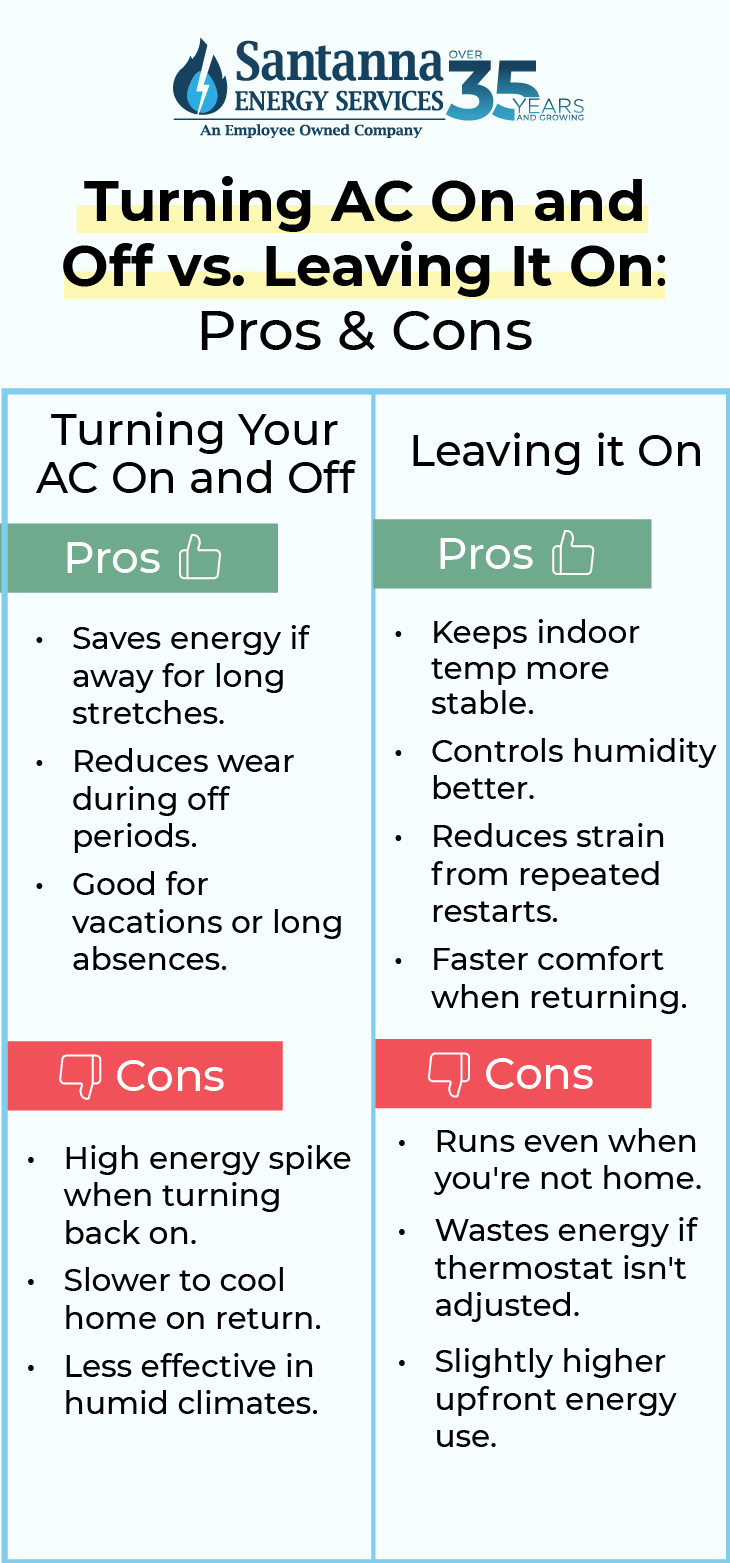
Cost Differences of Turning Your AC On and Off vs. Leaving It On
Understanding how your air conditioner usage impacts your electricity bill can help you make smarter energy choices. Here's a breakdown of the cost difference of turning your AC on vs leaving it on:
Let's say you have a 3,000-watt (3kW) AC unit — typical for a small to medium home. Here's how your costs may shake out.
Example: Cost of Turning Your AC On and Off vs. Leaving It On At a Rate of 16.44 Cents per Kilowatt-Hour
| Scenario | Description | Daily Cost ($) | Monthly Cost ($) | Yearly Cost ($) |
| Leave AC On, Adjust Thermostat | AC runs for 8 hours a day, but you raise the thermostat 5–7°F when you’re away to reduce strain. | $3.94
|
$118.20
|
$1,438.10
|
| Turn AC Off When Away | AC is completely shut off while you’re gone, then turned on when you return. | $4.73
|
$141.90
|
$1,726.45
|
Turning your AC off completely while you're away can increase your energy costs by about 20% compared to leaving it on and simply adjusting the thermostat.
Adjusting your thermostat instead of shutting off your AC entirely is a more energy-efficient and budget-friendly strategy!
Please note that this is an approximation; frequently turning your AC off and then back on when you return forces it to work harder to cool a hot home quickly. That burst of high energy use, repeated daily, can increase electricity costs, depending on home insulation and outdoor temperatures.
Why You Should Leave Your AC On All Day
While turning your AC off when you're not home can save energy in many cases, there are situations where leaving it on (but set to a higher temperature) is the better choice.
In hot and humid climates, air conditioners do more than cool—they also remove moisture from the air. Letting humidity build up during the day can lead to discomfort, promote mold growth, and even damage wood furniture, floors, and electronics. Keeping your AC on, even at a higher setting, helps maintain healthy indoor humidity levels.
In the same way, if your home is poorly insulated or exposed to intense sun, shutting the AC off completely can allow the indoor temperature to soar. This makes it much harder (and sometimes more expensive) for your AC to cool everything back down later.
Leaving your AC on (with temperature adjustments) can help you avoid returning to a hot, stuffy house at the end of the day. This can be especially helpful during heatwaves or if you have pets, elderly family members, or sensitive materials that need stable indoor conditions.
A smart thermostat allows you to set your AC to maintain a higher temperature when you're gone and cool down before you get back. This balances comfort and energy savings without having to shut the system off completely.
Energy Use by Air Conditioning Method
How you control your thermostat can make all the difference in optimizing energy use and savings. Various air conditioning strategies that impact energy consumption can help you make an informed decision to optimize comfort and efficiency. Here's a breakdown of common AC usage styles and how much they can cost you:
1. Set-and-Forget
This approach involves setting the thermostat to a constant temperature and leaving it unchanged. While it ensures consistent indoor comfort, it may lead to higher energy consumption, especially during periods when the home is unoccupied. The approach can potentially cost you more money and energy than the "smart cycling" approach.
Maintaining a constant temperature doesn't account for varying occupancy patterns and outdoor temperatures, potentially resulting in unnecessary energy use.
2. Smart Cycling
This strategy involves leaving your AC unit on but adjusting it to a hotter temperature while you're away. Smart thermostats and programmable controls can adjust the AC operation based on occupancy patterns and time of day. This is by far the most efficient strategy.
3. Fan-Only Mode
In this mode, the AC's compressor is turned off, and only the fan operates to circulate air. While this doesn't provide cooling, it consumes significantly less energy. It's useful for ventilating the home during mild weather or when cooling isn't necessary. However, in hot and humid conditions, relying solely on fan mode may not provide adequate comfort.
4. Turning Off Your AC Completely While You're Away
This strategy involves turning off your AC unit completely while you're away and turning it on again when you return. While providing more comfort than the "fan-only" approach, turning your AC unit on and off can cost more in the long run than the "smart-cycling" and "set-and-forget" approach.
Best AC Temperature for Saving Energy
We recommend setting your thermostat to 70°F – 78°F when you're at home and need cooling—that's the sweet spot for balancing comfort with energy efficiency. But the truth is, there's no one-size-fits-all setting. Your ideal temperature may depend on your home, your climate, and your comfort preferences.
Recommended Temperature and Thermostat Setting for Summer
For optimal comfort and energy savings during the summer, thermostat settings can vary based on climate and your daily routine. In drier climates, aim for the lower 70s°F, while humid areas do better around 78°F. During the day at home, 70°F offers comfort, but 78°F is more energy efficient.
At night, 74°F is ideal for comfort, while 82°F saves more energy. When you're away, set the thermostat to 77°F for comfort or up to 85°F to conserve energy. Upon returning home, adjust to a comfortable 70–78°F range. For vacations, 80–85°F is recommended to reduce energy use while keeping the home safe.
The Best Time to Turn Your AC On to Save Money
Electricity rates in many areas are higher during the late afternoon and early evening (typically 2 p.m. to 6 p.m.). Running your AC heavily during these hours can drive up your bill if you're on a time-of-use plan.
One smart strategy is to turn on your AC earlier in the day, such as mid-morning, before outdoor temperatures peak. This allows your system to cool your home gradually and more efficiently—without having to fight intense heat all at once.
If you have a programmable thermostat, set it to cool your home slightly in the early morning, and then let it maintain a steady, comfortable temperature throughout the day. This avoids sudden spikes in energy use and keeps your AC from overworking during peak periods.
In some regions, especially those with cooler evenings, you can give your AC a break and open windows at night to let in fresh air.
Use Your AC System Efficiently With a Programmable Thermostat
A programmable thermostat helps optimize your AC unit for comfort and potential savings. When your home is empty for long stretches (like during work hours or vacations), raising your thermostat by 7–10°F can significantly reduce energy usage. This way, your AC runs less while still keeping indoor humidity in check, especially important in hot, humid climates.
It also helps to program your AC to start cooling 30–60 minutes before you return. This ensures your home is comfortable when you walk in, without having wasted energy cooling an empty house all day.
Many thermostats allow you to set unique temperature schedules for different days of the week. To avoid wasting energy while you're out running your weekend errands, customize your programmable thermostats schedule based on when you're home most often.
Keep in mind that frequently manually changing the temperature can reduce efficiency gains. Stick to your programmed schedule as much as possible.
How Long Does It Take an AC Unit to Cool Your Home?
Depending on the size of your home and the capacity of your AC unit, how long your AC unit takes to cool your home can vary. It typically takes around 3-4 hours for an AC unit to cool down a home. Cooling the entire house by approximately 5°F may take around 3 hours, depending on insulation and external temperatures.
Typically, a properly sized air conditioner can lower the temperature in a small to medium-sized room (150-300 square feet) by about 10°F within 15 to 30 minutes under ideal conditions. In larger or poorly insulated spaces, cooling can take longer, especially if the AC unit is undersized or if there are factors like high humidity and poor insulation.
Does Turning the AC On and Off Cost More?
Frequently turning your AC on and off can lead to higher energy costs and system strain. This happens because each time the AC starts up and works to bring the room back to your desired temperature, it uses more energy than it would if it were simply maintaining a steady, consistent temperature.
When you shut the system off completely during the day, your home may have heated up significantly. Your air conditioner has to run longer cycles to bring the temperature back down to comfortable levels, thus using more energy.
Also, frequent manual shutdowns and startups can add mechanical wear to your system, especially to parts like the compressor. Just like a car that's constantly stopping and starting, your AC doesn't like abrupt extremes. It's better to let it cruise.
Factors That Influence the Cost of Manually Controlling Your AC Unit (Turning it Off and On)
Manually controlling your AC unit to turn on and off can cost more over time. In addition to this cost, a few factors can lead to higher electricity bills than anticipated. Here are some of the most common:
Indoor Humidity Levels
If your AC is turned off during the day, humidity can build up inside your home, especially in warmer climates. When you turn the system back on in the evening, it has to work harder to cool the air and remove excess moisture. This can lead to longer runtimes and higher energy bills.
Home Insulation & Air Leaks
Poorly insulated homes lose cool air more quickly, forcing your AC to run longer to maintain the desired temperature. When you manually turn your AC on and off, your unit has to work much harder to reach your desired temperature—especially in a poorly insulated home, where indoor temperatures rise more quickly compared to a well-insulated one. This added strain means your AC runs longer and uses more energy to cool things down.
Outdoor Temperature Extremes
On extremely hot days, your AC works harder and for longer periods to cool your home, especially if you're cooling from a higher indoor temperature after being off all day. Peak heat hours (2–6 p.m.) also strain the grid, sometimes triggering higher time-of-use rates in some areas, leading to higher electricity bills.
Is it Bad for the AC Unit to be Turning On and Off Frequently?
Yes, it is bad for your AC unit to be turning on and off frequently. Frequent cycling, known as "short cycling," can be detrimental to your air conditioning system. Short cycling occurs when your AC unit turns on and off more often than normal, preventing it from completing full cooling cycles. This behavior can lead to several issues:
1. Increased Wear and Tear
Each time your AC starts, it experiences a surge of power, which puts stress on components like the compressor and fan motor. Frequent cycling accelerates wear on these parts, potentially leading to premature failures. This added strain can reduce the overall lifespan of your system.
2. Higher Energy Consumption
Starting up your air conditioner frequently consumes more energy than running steadily. Each time the system starts up, it draws a surge of electricity. Over time, this frequent cycling adds up, causing your AC unit to consume more power overall. As a result, you may see higher electricity bills simply because your system is working harder than necessary.
3. Reduced Comfort
When your air conditioner short cycles—turning on and off in rapid bursts—it often doesn't run long enough to properly cool your home or regulate humidity. This means your living space may never reach the temperature you set, leaving certain rooms too warm or feeling muggy. The inconsistency can make your home noticeably less comfortable.
To avoid the negative effects of short cycling, ensure your AC system is properly sized for your home, maintain regular upkeep (like changing air filters), and consider using a programmable thermostat to manage temperature settings efficiently. If you notice your AC unit is frequently turning on and off without you setting it manually, it's advisable to consult a professional HVAC technician to diagnose and resolve the issue.
Is It Cheaper to Leave AC On All Day?
It's cheaper to leave your AC on all day than to turn it off and on, but it can still hurt your wallet if you leave it set at the same temperature even when you're away.
The key to saving is adjusting your thermostat when you don't need full cooling. For example, when you're out of the house or sleeping, it's best to raise the thermostat about 7–10°F higher than your usual setting. This reduces unnecessary cooling while still keeping humidity under control—especially important in hot, humid climates.
The easiest way to manage this is by investing in a programmable or smart thermostat, which automatically adjusts the temperature based on your schedule—maximizing comfort while keeping your energy bills in check.
Increase the Energy Efficiency of Your HVAC System
Looking to save some serious energy with your air conditioning unit? Here are some simple hacks that could save you in the long run:
- Replace or Clean Air Filters Regularly: Clogged filters restrict airflow, forcing your system to work harder. Check the filters monthly and replace them at least every 3 months.
- Schedule Annual Professional Maintenance: A yearly HVAC tune-up can catch minor issues before they turn into big energy drains. Technicians clean coils, check refrigerant levels, and ensure everything's running efficiently.
- Seal and Insulate Ductwork: Properly sealing and insulating ductwork, especially in attics and crawlspaces, improves airflow and efficiency.
- Install a Programmable or Smart Thermostat: Automated temperature control avoids energy waste. Set higher temperatures when you're away and cooler temperatures just before you return.
- Upgrade to an ENERGY STAR® Rated Unit: If your system is over 10 years old, upgrading to a high-efficiency model can cut your cooling costs by 20%. Look for units with a high SEER (Seasonal Energy Efficiency Ratio) rating.
- Improve Home Insulation: Good insulation keeps conditioned air inside and outdoor heat out. Attic insulation, weather stripping, and energy-efficient windows can all reduce how hard your HVAC needs to work.
- Use Ceiling Fans Strategically: Fans help distribute cooled air more evenly, allowing you to raise the thermostat by 2–4°F without losing comfort.
When it comes to running your air conditioner efficiently, there's no one-size-fits-all answer. The best approach depends on your home's insulation, climate, lifestyle, and system type. But across the board, one thing is clear: smart usage wins. Whether it's using a programmable thermostat, adjusting your settings when you're away, or maintaining your HVAC system, these small changes can lead to big savings over time.
If you're looking for even more predictability in your monthly energy costs, consider Santanna's Unlimited Energy Plan. With this plan, your supply charge stays the same every month, no matter how much electricity you use.* It's a great option for those who want comfort, control, and cost certainty, especially during peak cooling seasons. Learn more about Santanna's Unlimited Energy Plan here.
* Restrictions apply. Enrollment based upon program eligibility. Customers using more than 125% of normal monthly usage as determined by Santanna may be required to switch plans.
Tyler is an experienced energy professional, having worked for Santanna Energy Services, for the past four years. He is passionate about renewable energy and believes that diversifying the energy grid is the key to a sustainable future. Tyler is dedicated to supplying consumers with the best possible energy solutions and works diligently to make sure that Santanna can deliver the highest quality service.



